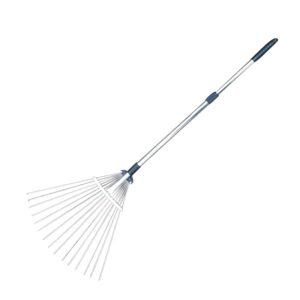Artificial grass offers a low-maintenance alternative to traditional lawns, providing a lush green space without the hassle of constant upkeep. However, like any outdoor surface, artificial turf requires regular maintenance to keep it looking its best. One essential aspect of artificial grass maintenance is proper brushing. In this comprehensive guide, we’ll explore the best techniques and tools for brushing artificial grass to ensure optimal performance and longevity.
Brushing artificial grass serves several important purposes:
Restore Upright Position: Over time, artificial grass fibers may become flattened due to foot traffic, weather conditions, or heavy objects. Brushing helps to restore the upright position of the fibers, maintaining a natural appearance.
Distribute Infill: Many artificial grass installations use infill materials to provide stability and support to the turf. Brushing helps distribute the infill evenly throughout the turf, preventing uneven settling and ensuring consistent performance.
Remove Debris: Regular brushing removes debris such as leaves, twigs, and pet hair from the surface of the turf, keeping it clean and free of obstructions.
Prevent Compaction: Brushing helps prevent compaction of the turf fibers, which can lead to reduced drainage and water pooling.
Follow these expert tips to ensure that you’re brushing your artificial grass effectively:
Choose the Right Brush: Select a brush specifically designed for use on artificial turf. Look for brushes with soft bristles that won’t damage the turf fibers.
Brush Regularly: Establish a regular brushing schedule, especially in high-traffic areas or after heavy use. Aim to brush the turf at least once a week to maintain its appearance.
Brush Against the Grain: Brush against the natural grain of the turf to lift and separate the fibers, promoting a fuller and more natural look.
Use Gentle Pressure: Apply gentle pressure when brushing to avoid damaging the turf fibers or causing unnecessary wear and tear.
Remove Debris First: Before brushing, remove any debris or loose material from the surface of the turf using a leaf blower or rake.
Inspect for Damage: Periodically inspect the turf for signs of damage, such as loose seams or tears. Address any issues promptly to prevent further damage.
Consider Power Brushing: For larger areas or heavy-duty cleaning, consider using a power brush specifically designed for artificial turf maintenance.
Proper brushing is essential for maintaining the appearance, performance, and longevity of artificial grass. By following the best practices outlined in this guide, you can keep your synthetic lawn looking lush, vibrant, and inviting for years to come. Incorporate regular brushing into your artificial grass maintenance routine to enjoy a beautiful, low-maintenance lawn that enhances your outdoor space.
Innovative and High-Performance Turf Solutions for Sports & Landscaping – Trusted Worldwide by Mango Sports.
Copyright © 2025 Mango Sports Co., Ltd. Powered by International Market Department



Get Your FREE Turf Sample & Quote Today – Experience Quality Before You Buy!